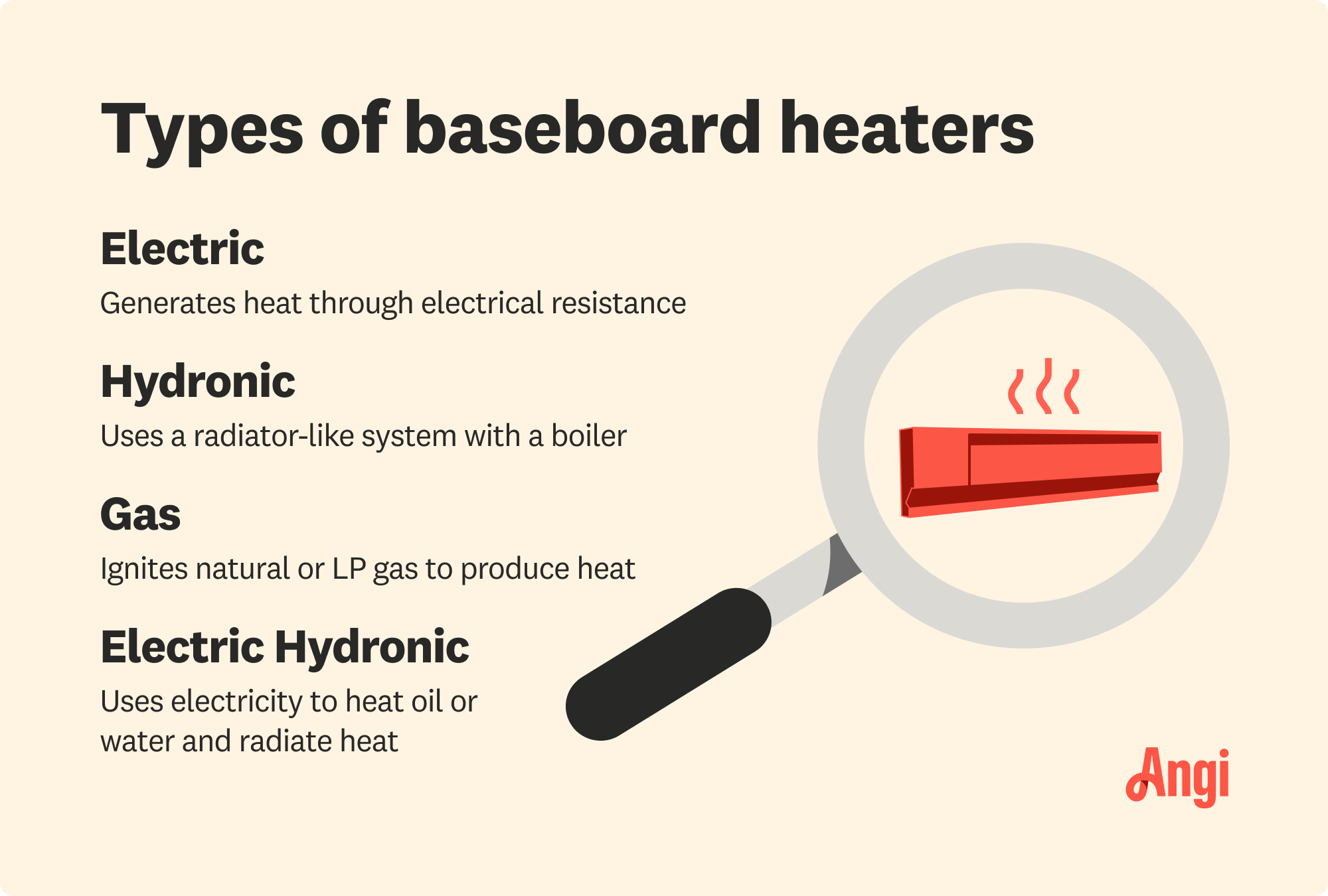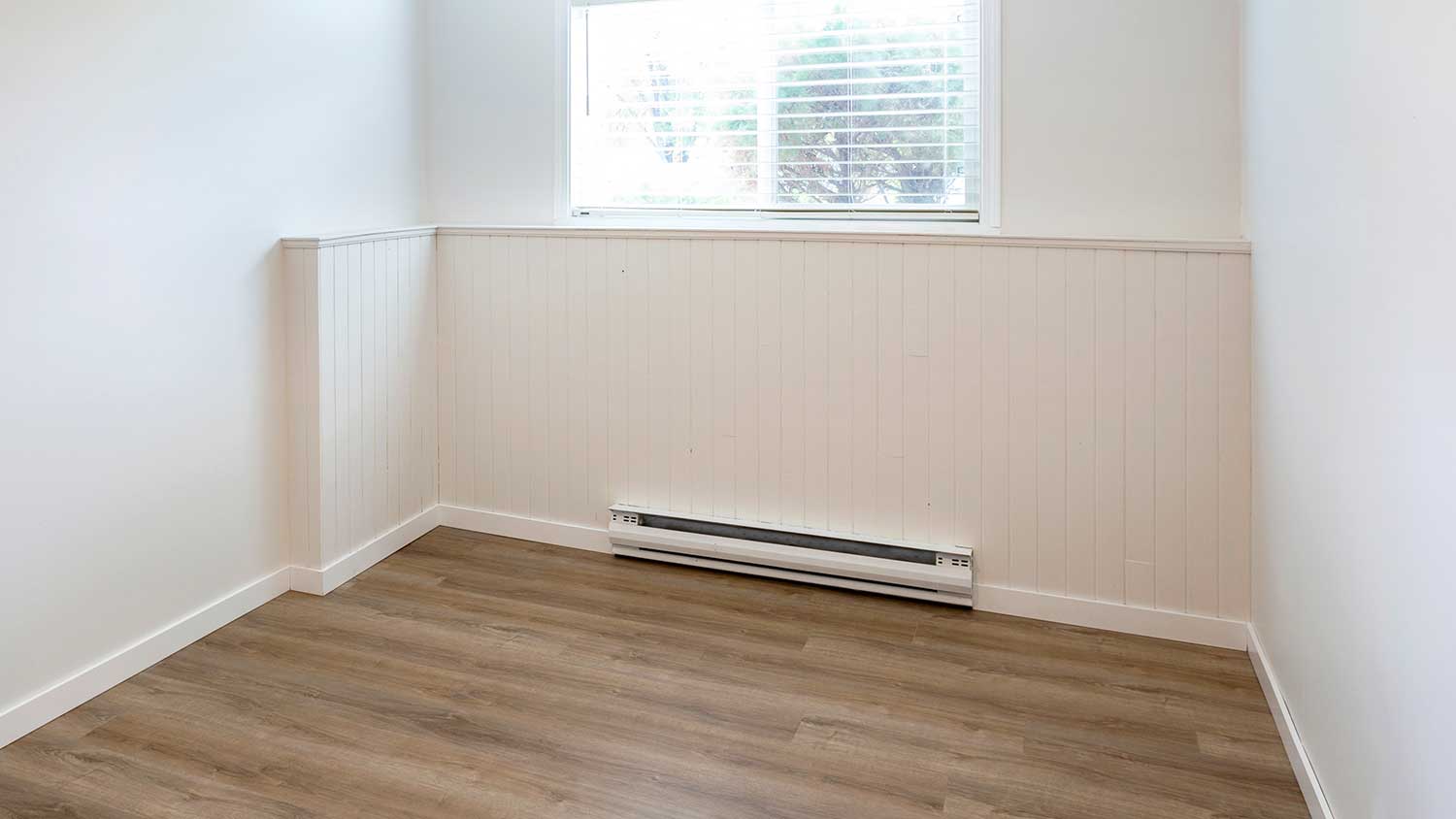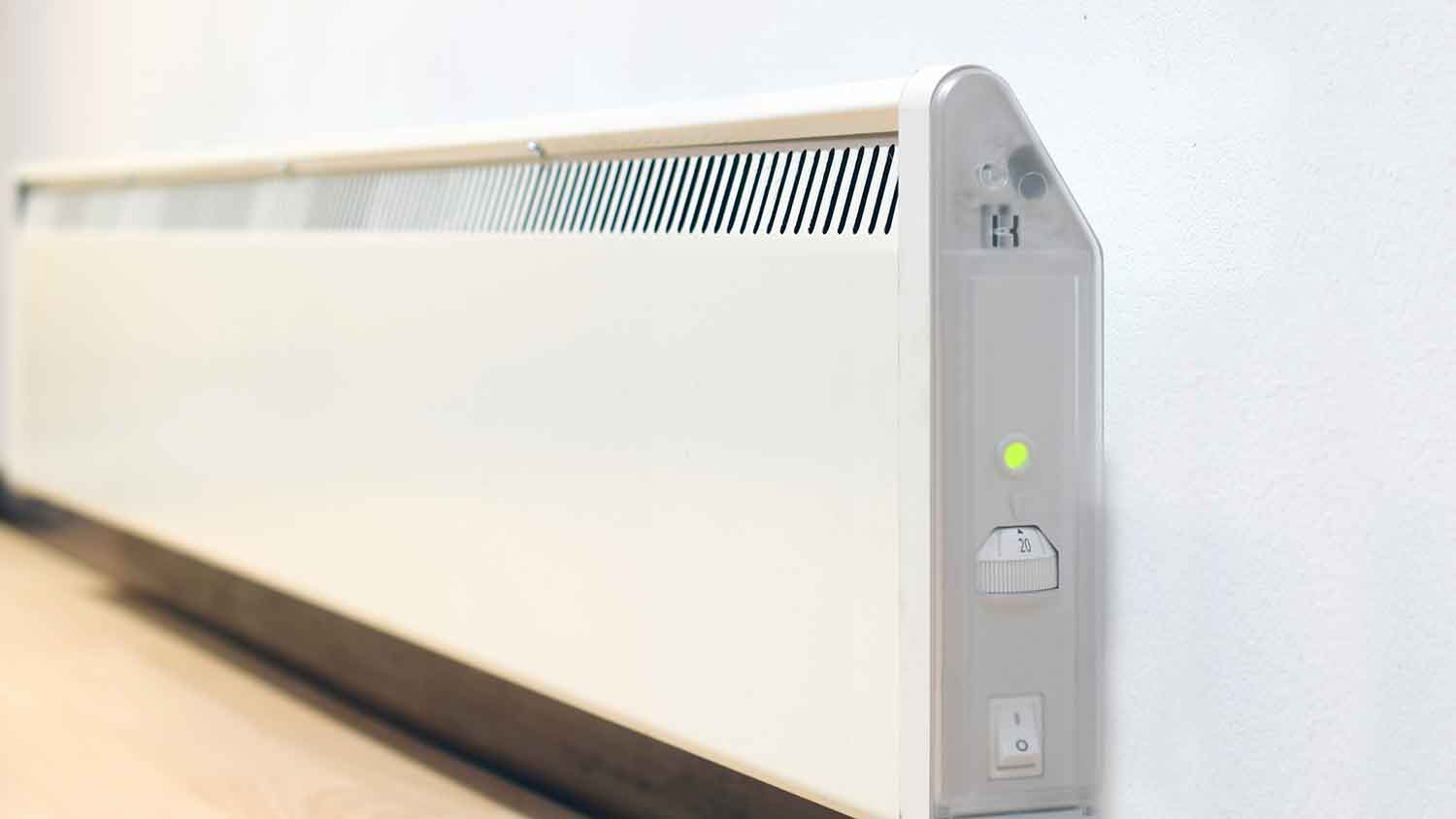
What you’ll pay in Columbus, OH, for furnace repairs depends on many factors. Here’s a breakdown of what can go wrong and the cost to fix those issues.
Ward off frosty nights by choosing the best baseboard heater for your home


Electric hydronic baseboard heaters maintain temperatures longer than electric baseboard heaters.
Electric baseboard heaters warm the room faster than electric hydronic baseboard heaters.
Electric hydronic heaters utilize water or oil to produce heat, while electric heaters rely on electricity.
Are you searching for a home heat source and debating between electric hydronic and electric baseboard heaters? If so, you may be wondering what the difference is between an electric hydronic vs. an electric baseboard heater and which one is the better choice for your needs.
This guide will explain the key differences between these types of baseboard heaters, their pros and cons, and how to hire a baseboard professional for installation.

While both types of baseboard heaters have similarities, such as both utilizing electricity to operate and neither require ductwork or blowers, they also have some significant differences.
The main difference between these types of baseboard heating is that electric hydronic heaters contain a liquid, either water or oil, inside the unit that is warmed by a heating element. Electric baseboard heaters do not contain liquid and use electric coils to generate heat instead.
Electric hydronic heaters can take longer to heat a room, but once they reach the set temperature, they maintain it longer than a standard electric baseboard heater. That’s because the liquid in the electric hydronic heater stays warmer longer than it does with the metal coils that are in standard units, making them more energy efficient.

An electric hydronic baseboard heater is a type of heating device that utilizes liquid, such as oil or water, inside the unit and is heated by electric heating elements. This is a separate type of system from a traditional hydronic baseboard heater, which uses a radiator-like system with a boiler.
Similar to other types of baseboard heaters, electric hydronic baseboard heaters consist of a long metal framework mounted to the base of the wall. Since the liquid retains the heat, this process keeps the room warm even after the unit turns off.
| Pros | Cons |
|---|---|
| Maintains warm temperatures for longer periods of time | Slower to heat up |
| Energy-efficient | Higher installation costs |
| Low noise levels | More costly to maintain |
Homeowners that want a more energy-efficient way to heat a room
People who prefer a less noisy heating option
Those who want consistent heating distribution
One of the biggest benefits of electric hydronic baseboard heaters is that they maintain a warm temperature longer than their counterparts. The liquid in the unit retains heat longer than the metal coils in an electric baseboard heater, which keeps the room warm even after the unit turns off.
This feature makes electric hydronic units more energy-efficient because it doesn’t turn on and off as frequently as an electric baseboard heater. This type of heating is also less noisy when running than other systems.
The downside of these heaters is that they are slower to heat up. That’s because it takes the liquid longer to get hot than the metal coils in electric baseboard heaters. Another major downside is that hydronic baseboard heaters are typically more expensive. Electric baseboard heaters cost between $200 and $1,100 per unit, whereas hydronic heaters range between $400 and $1,200 each.
Since these units have additional working parts, such as pipes that contain the liquid, they should be maintained by a baseboard heating professional and may cost more to service, depending on the repair or replacement.

An electric baseboard heater is also a type of heating system with a metal framework installed on the base of the wall. However, this type of baseboard heater has electric heating elements in metal pipes rather than liquid.
It draws cool air to the base, heats it, then releases the warm air into the room. This is also known as convection heating. The most common type is hardwired into your electrical system, but there are also electric baseboard heaters that plug into outlets.
| Pros | Cons |
|---|---|
| Simple installation | Expensive to operate |
| Less expensive to install | Potential safety hazard |
| Heats room quickly | Doesn’t maintain temperature as well |
Supplemental heating
Homeowners looking for a heating system on a budget
Those who desire a quick heating solution
A huge upside of electric baseboard heaters is that they are less expensive to install than other models. Other heating systems, such as HVACs and furnaces, can cost thousands of dollars to install. So, this can be a perfect heating solution for homeowners on a budget.
Electric baseboard heaters are relatively easy to install because they only need to be hardwired into your electrical system. If you only need supplemental heating for a particular room, you can opt for one that plugs right into an outlet. Another perk is that these heaters are quick to warm a room since they don’t contain liquid like hydronic heaters do.
Although the cost of installing electric baseboard heaters is less expensive, the amount it costs to operate them can be pricey. Your monthly utility usage and bill depends on many factors, such as the number of units, usage, home size, climate, and if the house is properly insulated. Operating electric baseboard heaters costs between $500 and $1,000 or more per month.
Another con to consider is that electric baseboard heaters tend to have hot surfaces to the touch, which can be a safety hazard and cause burns to the skin. Last but not least, electric heaters do not retain heat like hydronic units because they do not contain liquid, which results in them being less energy efficient.
Now that you know the difference between an electric hydronic and an electric baseboard heater, let’s compare them further to help you determine which type is better for your home.
As far as installation prices, electric baseboard heaters are less expensive to install. Prices start at around $200 per unit compared to $400 for a hydronic baseboard heater. However, while installation costs are lower, standard electric heaters are more expensive to operate than hydronic heaters.
Both types of baseboard heaters are simpler to install than other types of heating systems because neither requires ductwork. Since they utilize electricity as a fuel source, each type has to be hardwired into your electrical system.
You should hire a professional baseboard installation company near you to install whichever type of heaters to ensure it is placed correctly. Working with electricity can be extremely dangerous, so it’s best to leave it to a pro. However, there are some electric models available that you can plug into an outlet.
Electric hydronic baseboard heaters have additional components, such as fluid and piping, that may require more maintenance than the simple design of a standard electric baseboard heater. It’s recommended that any type of heating system be serviced by a professional at least once per year to ensure it is operating correctly and efficiently.
Baseboard heaters are notorious for their long lifespan. Of course, how long they last depends on several factors, such as the amount of use, whether they are installed correctly, and whether they are properly maintained. However, each type can last 15 to 20 years or more if they are well-maintained.
Raven and crew does absolutely fantastic job. They are very professional if any concerns were to occur with any of her work she always took responsibility and finished out with a great job. I have worked with her business for a year and have always been satisfied. Very trusted business and...
I had Ace Fireplace Services install custom chimney caps for my home, and the results are stunning. They fit like a glove and have added a touch of sophistication to my chimney. I can't recommend their services enough.
Precision and professionalism define Custom Paint Jobs LLC. We couldnt be happier.
Very professional and efficient with work. Answered each question I had with great knowledge and an informative response. Will be working with them again.
Window Depot did an amazing job on my deck. I wasnt sure what I wanted to do, but their composite decking was affordable and will last a long time. I am excited to have family over, and I am no longer embarrassed by my backyard. Jeff and the ground crew were polite, respectful, and caring for...
Great tree company, very professional and honest. Glad we found them, they had the best pricing
We used Unique Hardwood Floor LLC three years ago to work on the floors of a 70 year old home that needed a great deal of work. Some floors needed repairs, some were replaced and others just needed to be refinished. It was a complicated job as they needed to blend the old and the new to...
From average costs to expert advice, get all the answers you need to get your job done.

What you’ll pay in Columbus, OH, for furnace repairs depends on many factors. Here’s a breakdown of what can go wrong and the cost to fix those issues.

Springing for HVAC maintenance costs may seem like an extra—and easy-to-ignore—item on your checklist, but it will save you money in the long run.

When your heat goes out, it can cause a bit of a panic. But knowledge is power, so let's go over radiator repair costs before that happens.

A problem with your heat pump can lead to a house that’s too cold or too hot. Learn the most common heat pump problems—including any weird noises—and their solutions.

Is your heat pump not blowing hot air? Several factors could be causing this issue, and we dive into seven of the most common heat pump issues.

Thinking about installing a heat pump in your home? Learn about the different types of heat pumps and the options you can choose from in this guide.